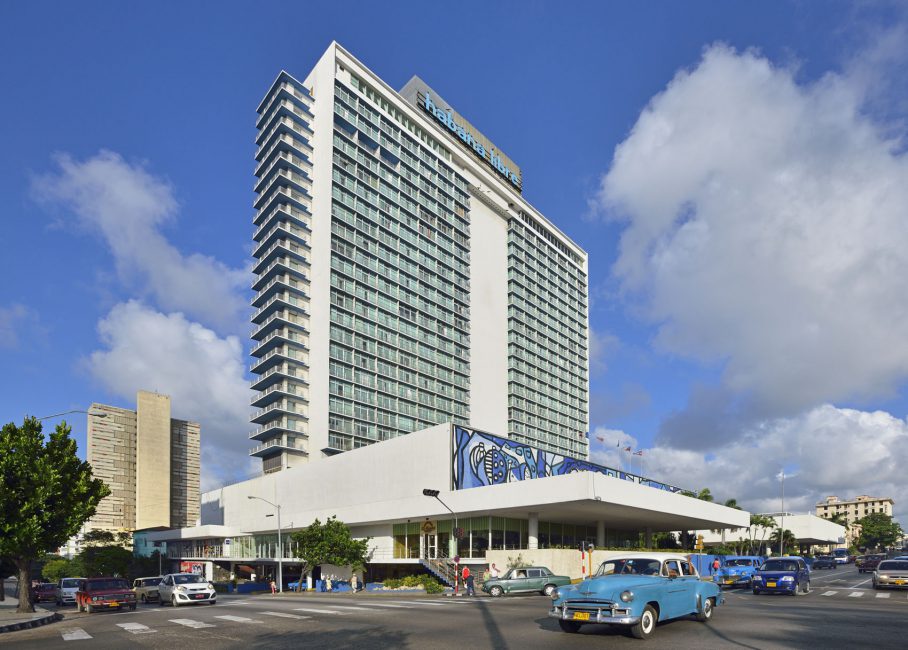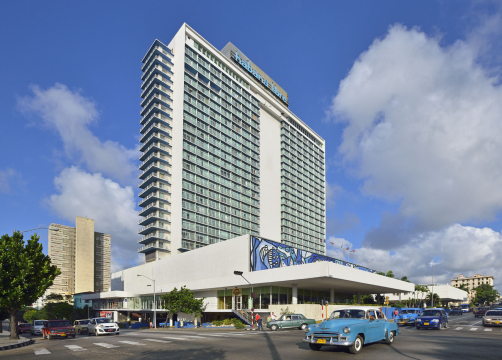
On 19 March, the iconic hotel complex Tryp Habana Libre, one of the largest in Cuba and situated in one of the most popular areas in Havana, will be celebrating the 55th anniversary of its establishment. This hotel is a jewel in the heart of this modern city.
This iconic, fifties-style tower has 27 floors and more than 600 rooms, and is a striking sight against the surrounding landscape. Over 200 metres above sea level, it is renowned for its location. Its rooms are huge, and those on the top floors boast stunning views of the entire city and the sea. The top floor accommodates the Sierra Maestra Panoramic Lounge and the Turquino Cabaret Club, equipped with a retractable roof, opening on to a wonderful viewpoint of the Caribbean Sea.
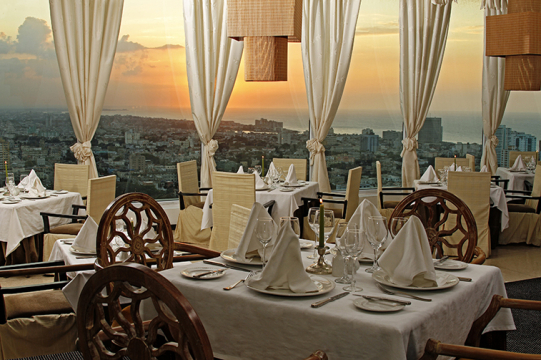
The Habana Libre was originally built as the Hotel Habana Hilton, under the personal auspices of President Fulgencio Batista. Designed by the American firm Welton Becket & Associates in collaboration with the Cuban firm Arroyo-Menéndez in the late 50s, this building was constructed in agreement with the Caja de Retiro Gastronómico de Cuba, (the Cuban Catering Workers’ Union), at a cost of 24 million dollars. The Union had signed an agreement with Hilton International Hotels, allowing it to run the hotel and guaranteeing visits from tourists from both the US and other countries.
The formal opening ceremony took place on the evening of Wednesday 19 March 1958 and it was opened to the public three days later. The Hotel Habana Hilton was the tallest and largest hotel in the whole of Latin America. It had one of the most famous shopping centres, almost 630 rooms and around 20 members of the American mafia on its payroll, mainly responsible for running the casinos, the cabarets and other profit-making areas involving the selling of alcohol, drugs and sex, a very normal part of life at that time in all of the large hotels in Havana, which, as is well known, was a business controlled by Al Capone, Santos Traficante, George Raft, Meyer Lansky and other mafia bosses based in the United States.
On 8 January, when Fidel Castro made his entrance into Havana, he stayed here with other members of his army. From that moment on, for a period of three months, the La Continental Suite, room 2324, became the Revolution Command Post, from where press conferences and interviews were delivered. This room has remained intact as a place of historical interest. On 11 June 1960, due to the owner’s problems with outstanding payments, the hotel was taken over and its name changed to Habana Libre.
In December 2000 the management was shared with the Spanish hotel group Hoteles Tryp, belonging to the Meliá chain, responsible for its management and marketing and with more than 25 establishments on the Island under its management. That date saw the commencement of the first and second phases of major renovation work, concerned not only with the interior furnishings, but making the rooms more spacious, with large windows.
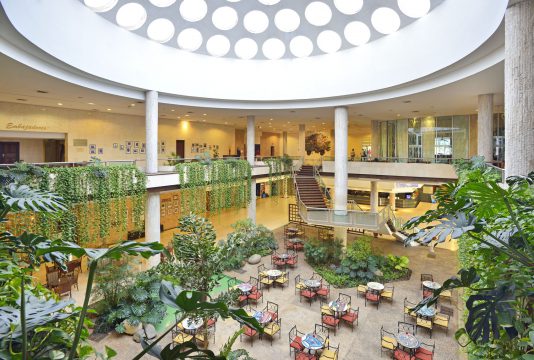
The new Tryp Habana Libre opened its doors in December 1997 with the most representative works of Cuban visual arts and craftsmanship completely restored, such as that of Alfredo Sosabravo, at the entrance to the Buffet Restaurant; to which the beautiful clepsydra, a sculpture by the renowned Cuban artist Rita Longa was added in the lobby.
The giant of the sector is currently the protagonist of an investment process to be developed over a period of four years and aimed at improving the infrastructure, particularly the comfort of the rooms and various common areas.
These improvements will enable markets to be explored in the country in relation to events and banqueting. The increase in the attraction of guests participating in various events such as the Cigar Festival; the International Book Fair and the Drum Festival, are examples of this.
The giant of “La Rampa” has remained closely linked with cultural life in the capital, not only due to its location, but also due to the fact that it houses works of heritage such as the mural by Amelia Peláez, one of the largest in the country; the mural History of the Antilles, by the painter and ceramicist René Portocarrero and on the occasion of the hotel’s 50th anniversary, another mural was created by the exponent of plastic arts, Nelson Domínguez.
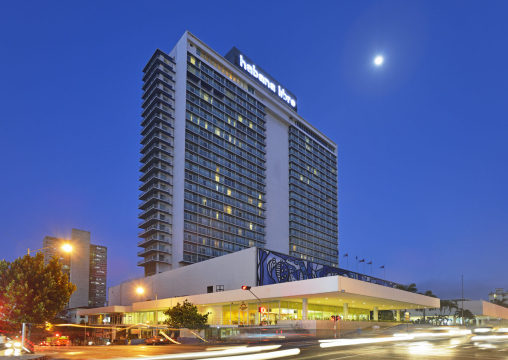
Both the features and the location of the building, which in spite of the passage of time is renowned for its well-planned design, traditional and modern, combined with a highly-specialised service, mean that the Hotel Tryp Habana Libre continues to be today, as it was yesterday, the most iconic hotel in the City of Havana.

